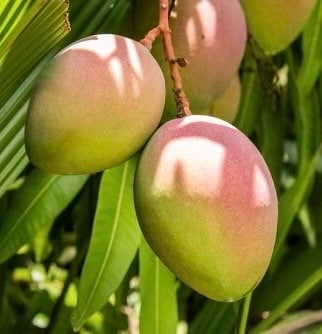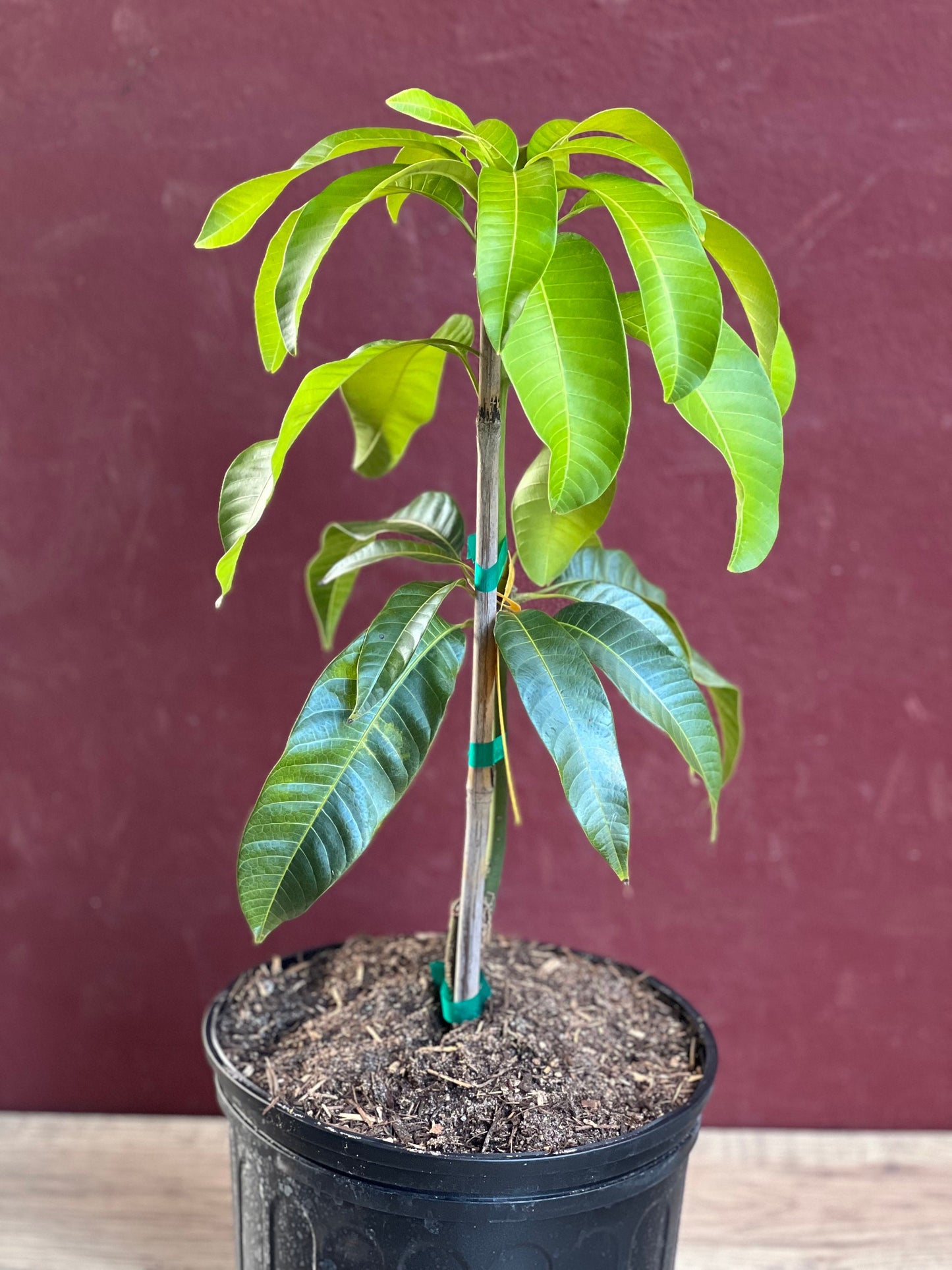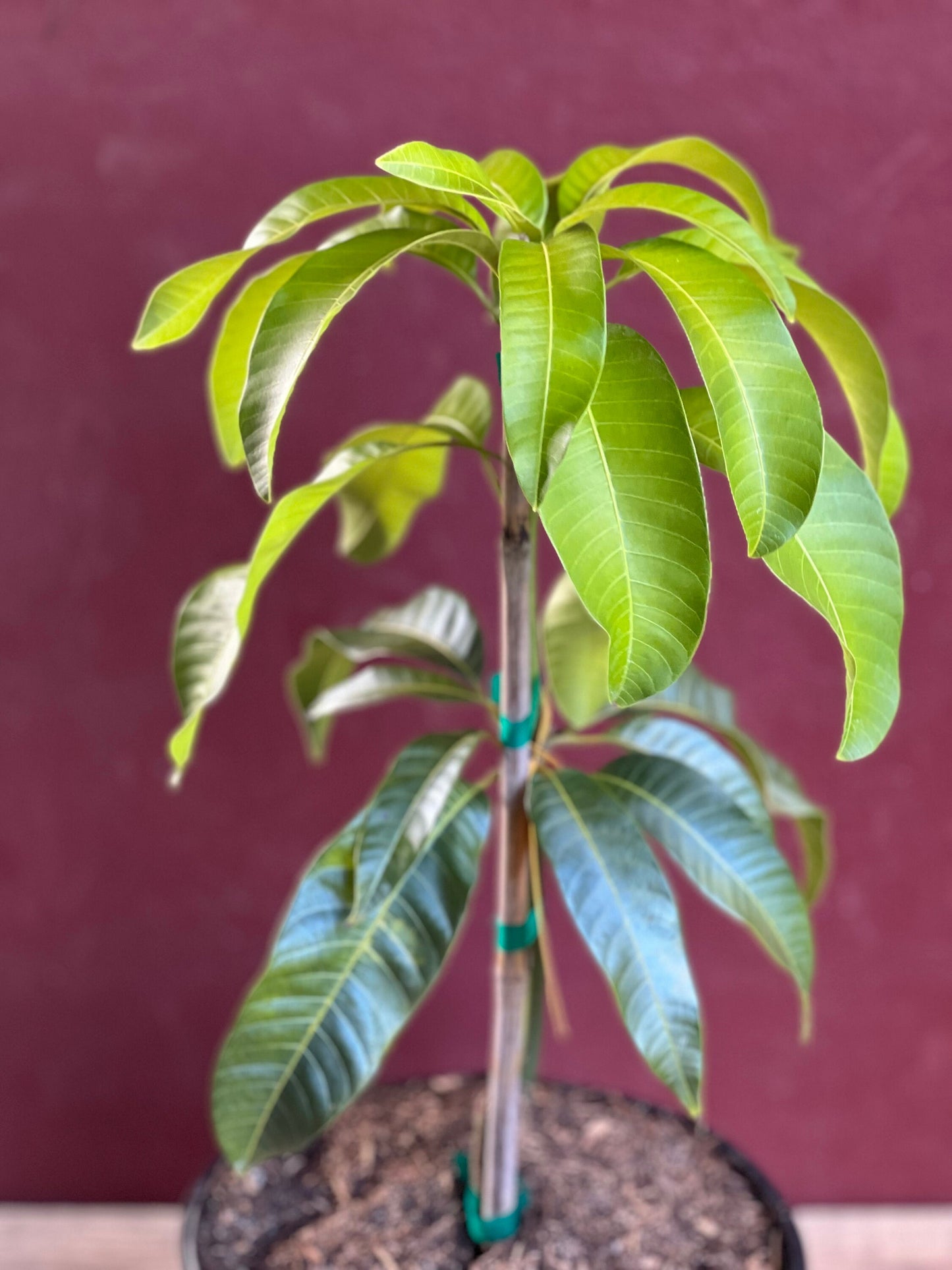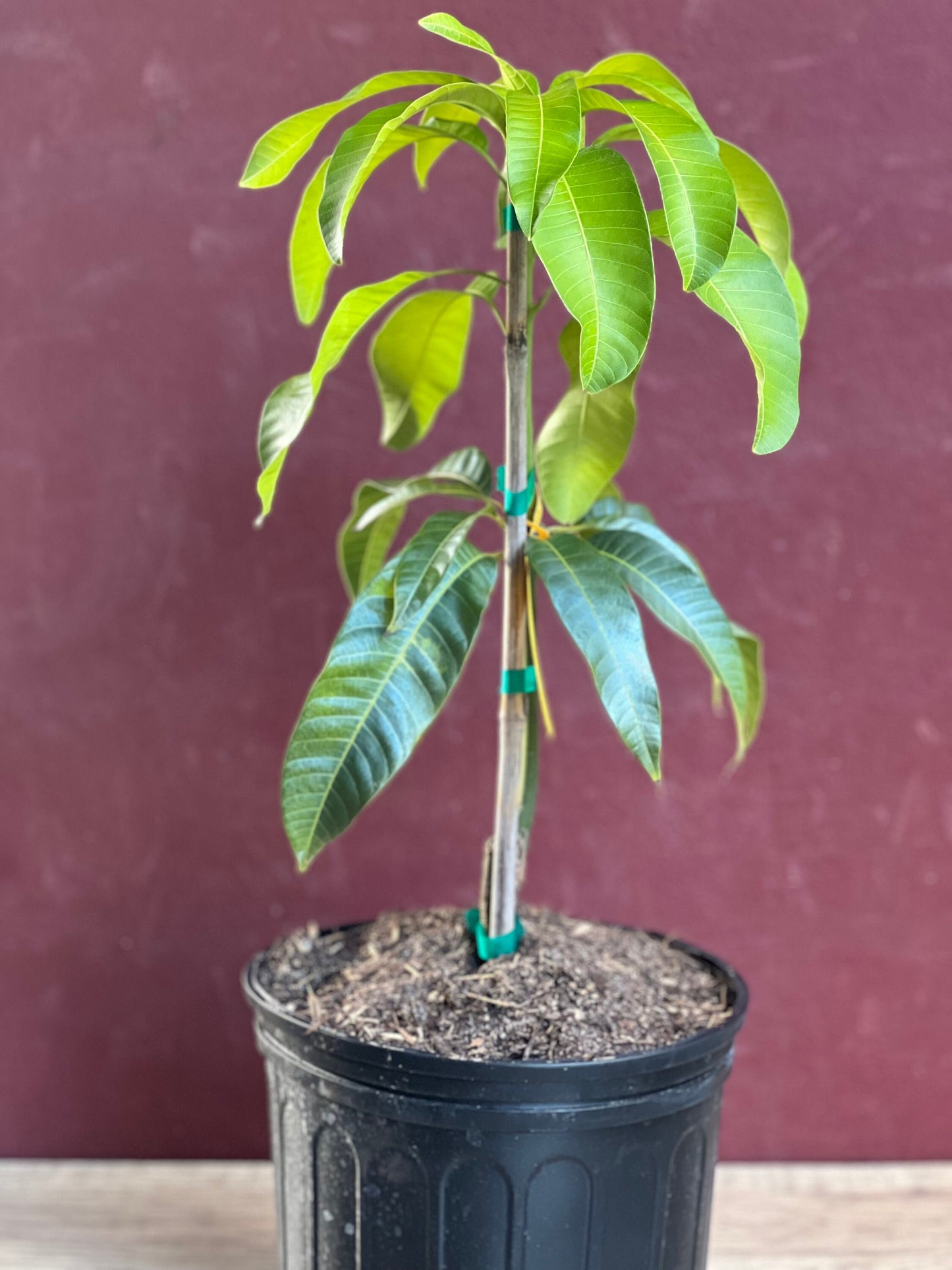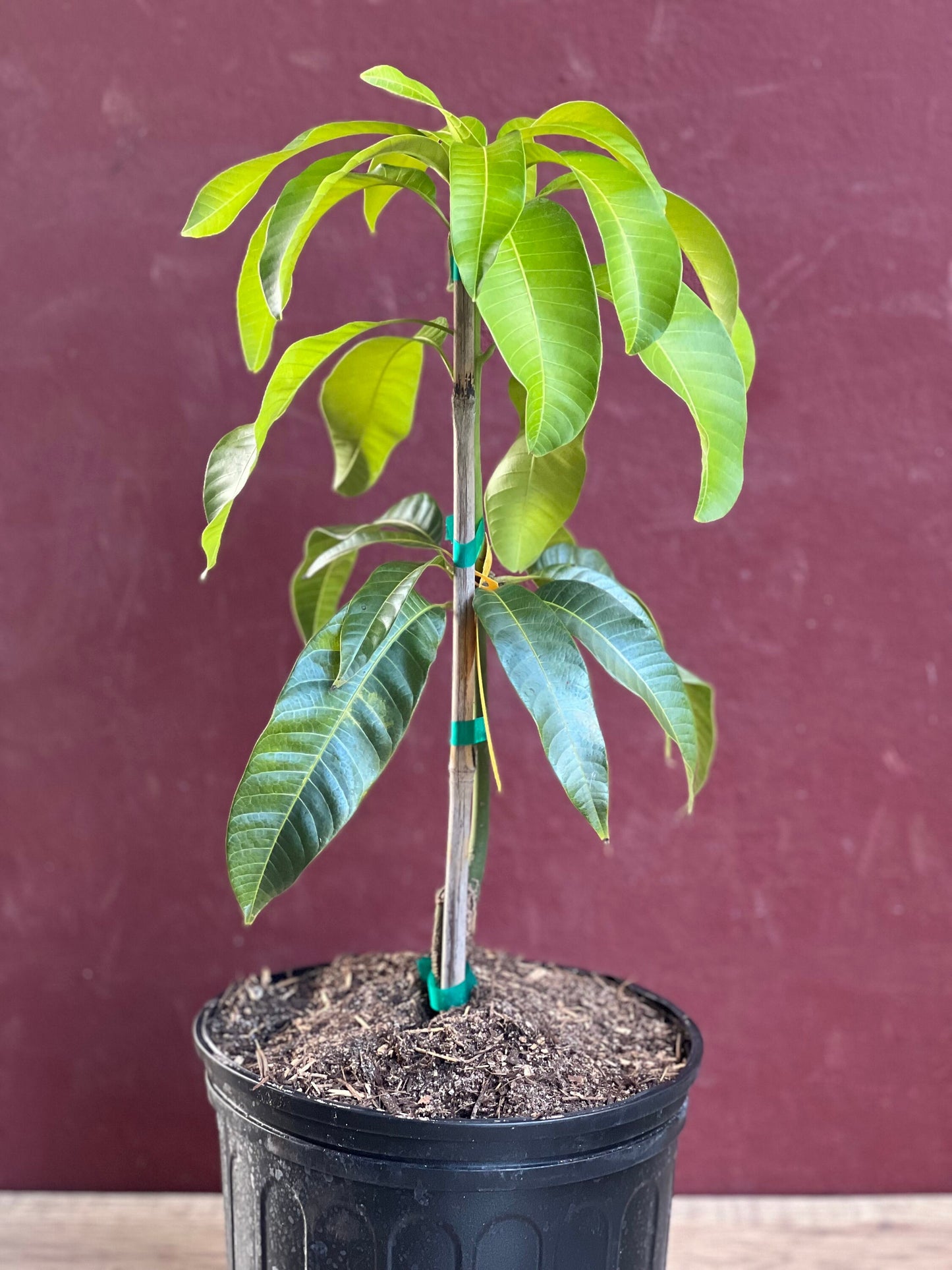Karen Michelle Mango, grafted in 3 gallons pot, No Ship to CA and HI
Karen Michelle Mango, grafted in 3 gallons pot, No Ship to CA and HI
Couldn't load pickup availability
You will receive one Karen Michelle Mango in a 3-Gallon Pot, similar to the pictures.
About the Plant
The Karen Michelle Mango is a highly prized mango variety known for its exceptional sweetness, smooth, non-fibrous flesh, and intensely tropical flavor with hints of peach and citrus. Originating from the Philippines, this mango has a thin skin that turns a vibrant yellow-orange when ripe and offers a buttery, smooth texture.
Karen Michelle Mango trees are compact, disease-resistant, and ideal for both home gardeners and commercial growers in tropical and subtropical climates. These mangoes are perfect for fresh eating, smoothies, or desserts.
Light Requirements
- Full Sun: Requires 8–10 hours of direct sunlight daily for healthy growth and sweet fruit production.
- Indoor Growing: If growing indoors, place near a south-facing window or use supplemental grow lights to ensure sufficient light.
Watering
- Moderate Watering: Water deeply when the top 1–2 inches of soil feel dry.
- Drainage is Key: Mango trees are susceptible to root rot. Ensure well-draining soil and pots with drainage holes.
- Winter Care: Reduce watering during cooler months as the tree’s needs are lower when dormant.
Soil Requirements
- Well-Draining, Loamy Soil: Prefers slightly acidic to neutral soil with a pH of 5.5 to 7.5.
- Avoid Clay Soil: Clay holds too much water, increasing the risk of root rot. Improve drainage with organic amendments like compost or perlite.
Temperature & Humidity
- Optimal Temperature: Prefers 70°F to 95°F (21°C to 35°C). Protect from temperatures below 50°F (10°C).
- Humidity: Enjoys moderate to high humidity. Use a humidifier or place a shallow water tray nearby in dry conditions.
Fertilizing
- Growing Season (Spring to Summer): Feed every 4–6 weeks with a balanced, slow-release fertilizer high in nitrogen to support leaf growth.
- Fruit Production: Switch to a fertilizer higher in phosphorus and potassium during flowering and fruit development.
- Avoid Over-Fertilizing: Excessive nutrients can result in poor fruiting or excessive vegetative growth.
Pruning & Maintenance
- Light Pruning: Prune regularly to maintain a compact shape, improve airflow, and remove dead/damaged branches.
- Avoid Heavy Pruning: Excessive pruning can reduce fruit production.
Pests & Diseases
- Common Pests: Aphids, Mealybugs, Scale Insects, Spider Mites. Treat infestations with insecticidal soap or neem oil.
- Fungal Diseases: Powdery Mildew & Anthracnose. Prevent by maintaining good air circulation and avoiding overhead watering.
- Root Rot: Caused by overwatering or poor drainage. Always ensure soil drains well.
Pollination & Fruit Production
- Self-Fruitful: Karen Michelle Mango trees do not require another tree for pollination.
- Flowering & Fruit Development: Typically flowers in late winter to early spring. Fruit matures during the summer, taking 4–6 months to ripen.
- Thinning Fruit: If too many fruits are produced, thinning will help remaining fruits grow larger and tastier.
Repotting (Container-Grown Trees)
- Repot Every 1–2 Years: Refresh soil and give roots more room to grow.
- Choose a Larger Container: Ensure proper drainage by using fresh, well-draining potting mix designed for citrus/fruit trees.
Harvesting
- When to Harvest: Ripe fruits are vibrant yellow-orange in color. The skin may still have green near the stem, but ripe mangoes yield slightly to gentle pressure.
- Harvest Carefully: Use a sharp knife or garden shears and leave a small stem attached to avoid bruising.
The Karen Michelle Mango is an excellent addition to any tropical or subtropical garden and a great choice for container growing as well. With regular care, this mango will reward you with sweet, non-fibrous fruit during the summer months.
Share
